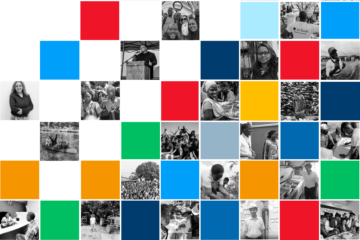Access Interview: Patrick Nirina Rakotomahandry, CIO at AccèsBanque Madagascar

By Ivana Mitrovic
As a holder of a Master of Management specializing in international finance, Patrick Rakotomahandry has more than twelve years of experience in international consulting in various sectors like technology, banking and project management. He started his career as a junior, then senior manager to become, in the end, IT and Project Manager in the first ISO 9001 certified consultancy firm in Africa. He joined the management team of AccèsBanque Madagascar in 2018 as Chief Information Officer. Rakotomahandry is now in charge of three departments: IT operations, IT developments and Project Management Office.
The digital transformation process is an amazing and exciting adventure that needs to be handled with care.
Patrick, how would you describe your first encounter with the AccèsBanque Madagascar and your first impression of the bank’s technical readiness and intentions to digitalize channels and processes when you joined in 2018?
First, I need to explain my motivation and the choice of AccèsBanque Madagascar. While searching for new challenges, I was offered an opportunity when the bank was looking for a CIO. During my interview with the CEO, Mikhail Velichko, I was impressed by his leadership and vision. Indeed, he has a disruptive way of thinking, and I love that. This first contact totally convinces me that AccèsBanque Madagascar is not only a bank which wants to make a profit but also a company which will involve in the development of the country by introducing digitalization.
However, when I started and discovered the technical environment and the limitation we had with our information systems, I feared that I would manage to overcome the challenges to digitalize the bank. For instance, I could not imagine how possible to reach our goal without having our own developer’s team, and this is what I structured first. In 2018, we created the IT development department, and the digitalization transformation officially started.
Only four years later, the institution transformed tremendously, thanks to a joint effort of all the employees, but primarily to your department. Your team greatly supported the business, but achieving the given targets is not always easy. What are your main challenges in developing and motivating your team? What would you describe as your main achievement in the last four years?
Indeed, the staff is the key to this transformation, and we need motivated people to achieve the given targets. In general, there is a high demand for IT profiles on the market, especially in Madagascar. All companies want to digitalize, and they are very competitive to attract excellent and specific IT profiles if they are not going to work abroad. The main challenge is to keep working to retain them within the bank even though they constantly receive better job proposals with potentially better socio-economic conditions from other Mobile Operator Networks, Banks, or digital companies. For this, I would like to take this occasion to thank all my team without exception for their fidelity to AccèsBanque in general and the IT department in particular.
This brings me to my main achievement of the last four years: recruiting and retaining IT profiles with scarce skills compared to the markets.
Can you give us an insight into the digitalization of AccèsBanque Madagascar from the IT side until now? For example, how did you create your IT strategy, pick the projects, and successfully manage theme?
Since 2018, the IT strategy has been updated every year following the business and management vision and considering the technology evolution. Our IT Strategy is based on strategy results of the current year. We involve the key people in IT and business to identify the challenges, and then the strategy comes up from this internal brainstorming. Projects selected and then challenged during steering committees are not based only on technical criteria but primarily on business criteria to reach the time to market.
The key to our successful projects is the way that we manage our projects, which follows the agile principles and procedures of the Project Management Office that interfaces the integration between the developments and the production part. We also agreed with the digital innovation team to centralize with them all the business needs. It is their role to evaluate the pertinence of all requests before it becomes a development project.
To build a strong creation, one must define and set strong foundations. What would be the bank’s IT foundation projects, and how do you leverage IT infrastructure in the digitalization process?
I like the allusion you use for this question about house construction. Actually, we take this image as well for our strategy definition. The foundations are the most critical IT projects that must be implemented in parallel to support all digitalization projects (represented by walls of the house). Technologically speaking, our IT infrastructure needs to be in permanent evolution, considering many factors, like the estimation of business growth, the need for digitalization, of course, and the development of technology.
One of our pride is how we optimize the existing IT infrastructure. It is not always easy to grow the capacity of our resources indefinitely, and that is why we follow the principle of lean to monitor tightly and constantly the usage of those resources to fit our current and future needs without waste. Thanks to the new technology, it is now possible to extend in terms of management of resources, so our biggest IT foundation project is to render this flexible and secure IT infrastructure possible, including not less than a dozen projects.
What would be the great lessons you have learnt so far, and what is your message to everyone who starts or is in the digital transformation process?
When it is something brand new, it is essential to start with a small scope and not hesitate to test and fail concepts before success. Some transformation is disruptive, and having the final scope at once is unnecessary. Quick wins are also enough if we want to change because it is always good to start with something than not starting at all. The time to market is moving, and we cannot stop transforming just because we are not yet ready.
I will conclude with my favorite quote from the CEO of Awak’IT “The biggest difficulty with digital transformation is changing the wheel of the car without stopping it”.


